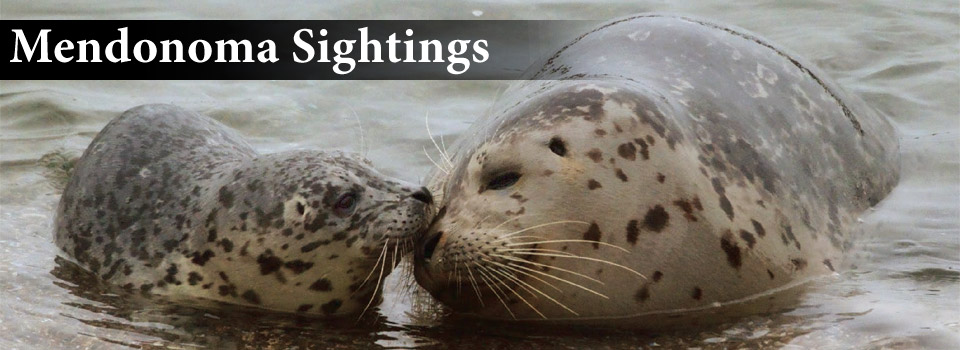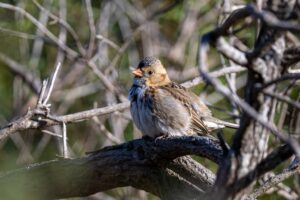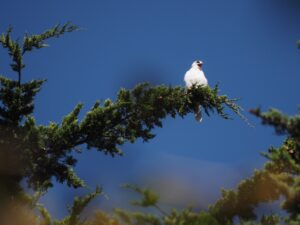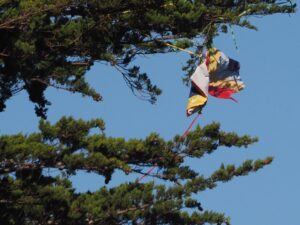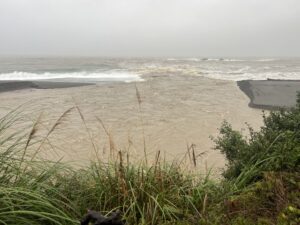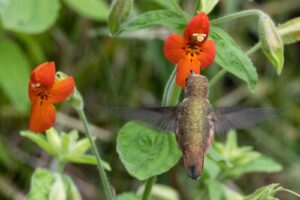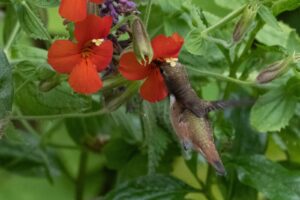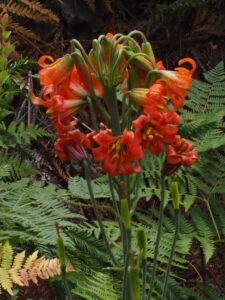Karen Wilkinson heard about this beautiful bird and convinced her husband, Mike Petrich, to get a photo. Karen wrote, “Getting outside and soaking up the sunshine and calm winds was a total treat, but so was the Manchester Christmas Bird Count this [past] weekend. I joined Rich Trissel’s team for the southern territory and had a great day out. We saw 70 species of birds in a single day. That's a decent number for a winter's day along the Mendonoma coast. On the walk, some of the more experienced birders were talking about a rarity that was seen in Pt Arena earlier in the week - a Harris's Sparrow. It was a long shot, but I bribed Mike with a Zack's Milkshake if he'd join me for a little sparrow stalking expedition. It really was a long shot…BUT… we found it! I got my 'lifer bird' and Mike got a banana chocolate milkshake. Win, win.”
The wayward sparrow was with a mixed flock of White-crowned Sparrows and Golden-crowned Sparrows. The flock was immediately behind the blue apartment buildings (Point Arena Village Apartments) which can be accessed off of Port Road. I have not received any more sightings of this bird for some days now.
Harris’s Sparrow is the only songbird that breeds in Canada and nowhere else in the world. In winter it is found in the south-central Great Plains, which is nowhere near Point Arena. Their populations are declining due to their vulnerability to habitat loss on the wintering and breeding grounds.
It's beautiful here today with blue skies and very little wind.
